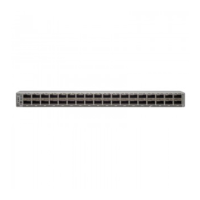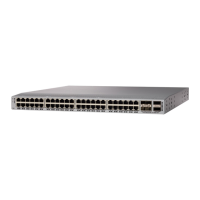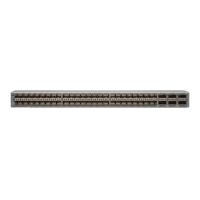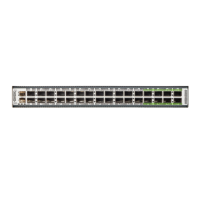Troubleshooting Excessive Packet Flooding
Unstable STP topology changes can trigger excessive packet flooding in your STP network. With Rapid STP
or Multiple STP (MST), a change of the port's state to forwarding, as well as the role change from designated
to root, can trigger a topology change. Rapid STP immediately flushes the Layer 2 forwarding table. 802.1D
shortens the aging time. The immediate flushing of the forwarding table restores connectivity faster but causes
more flooding.
In a stable topology, a topology change should not trigger excessive flooding. Link flaps can cause a topology
change, so continuous link flaps can cause repetitive topology changes and flooding. Flooding slows the
network performance and can cause packet drops on an interface.
SUMMARY STEPS
1.
switch# show spanning-tree vlan vlan-id detail
2.
switch# show spanning-tree vlan vlan-id detail
DETAILED STEPS
PurposeCommand or Action
Determines the source of the excessive
topology change.
switch# show spanning-tree vlan vlan-id detail
Example:
switch# show spanning-tree vlan 9 detail
VLAN0009 is executing the rstp compatible Spanning Tree protocol
Step 1
Bridge Identifier has priority 32768, sysid 9, address
0018.bad8.27ad
Configured hello time 2, max age 20, forward delay 15
Current root has priority 32777, address 0018.bad7.db15
Root port is 385 (Ethernet3/1), cost of root path is 4
Topology change flag not set, detected flag not set
'' Number of topology changes 8 last change occurred 1:32:11
ago''
'' from Ethernet3/1''
Times: hold 1, topology change 35, notification 2
...
Determines the interface where the
topology change occurred.
switch# show spanning-tree vlan vlan-id detail
Example:
switch# show spanning-tree vlan 9 detail
VLAN0009 is executing the rstp compatible Spanning Tree protocol
Step 2
Repeat this step on devices connected to
the interface until you can isolate the
device that originated the topology change.
Bridge Identifier has priority 32768, sysid 9, address
0018.bad8.27ad
Check for link flaps on the interfaces on
this device.
Configured hello time 2, max age 20, forward delay 15
Current root has priority 32777, address 0018.bad7.db15
Root port is 385 (Ethernet3/1), cost of root path is 4
Topology change flag not set, detected flag not set
Number of topology changes 8 last change occurred 1:32:11 ago
'' from Ethernet3/1''
Times: hold 1, topology change 35, notification 2
...
Cisco Nexus 9000 Series NX-OS Troubleshooting Guide, Release 7.x
59
Troubleshooting STP
Troubleshooting Excessive Packet Flooding
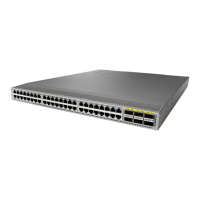
